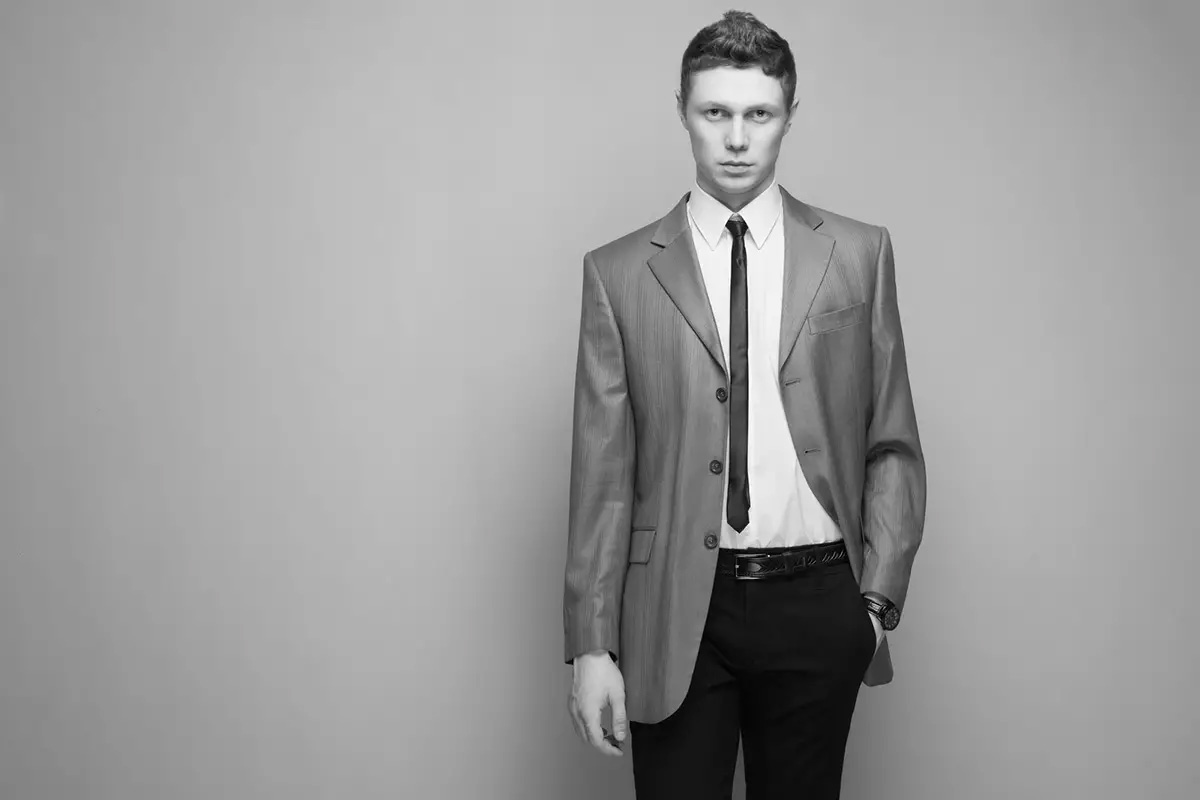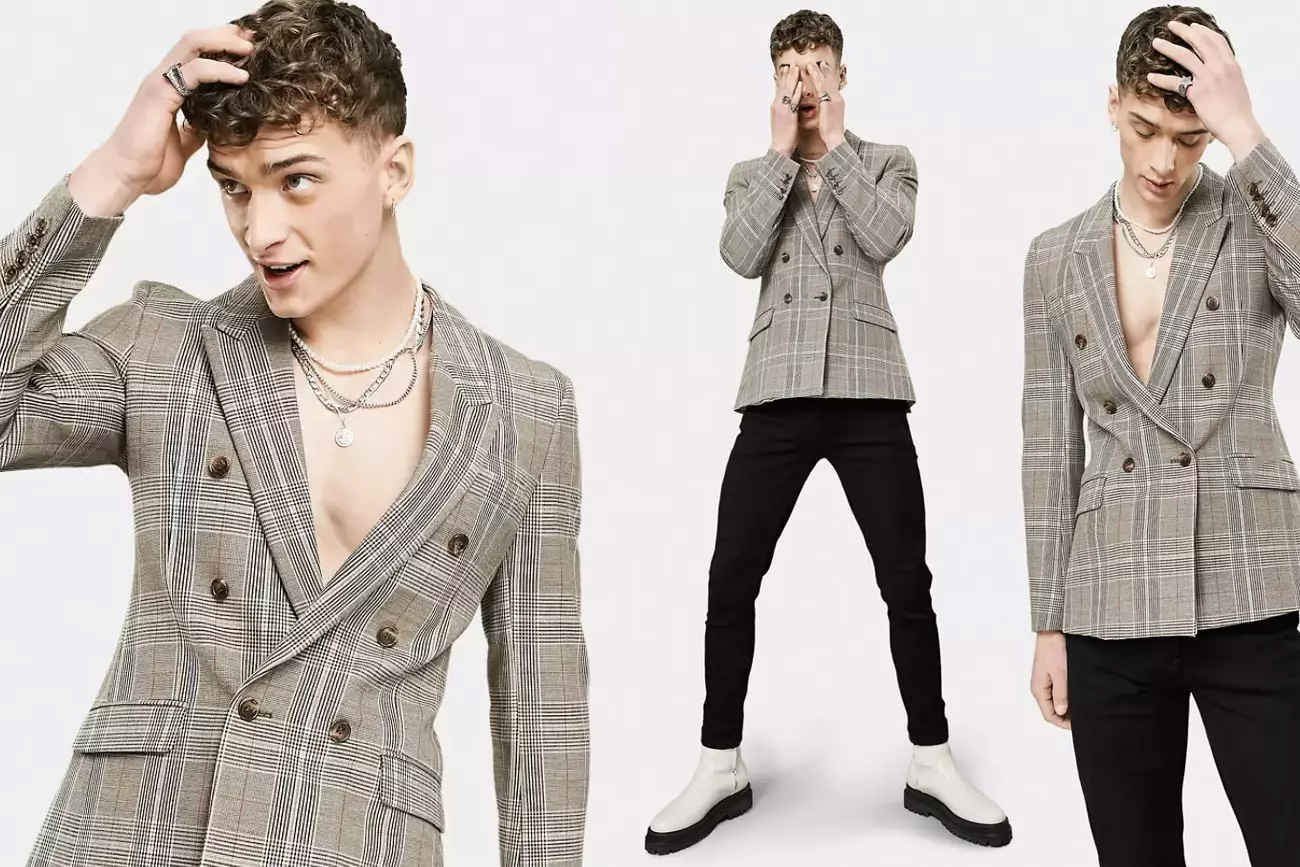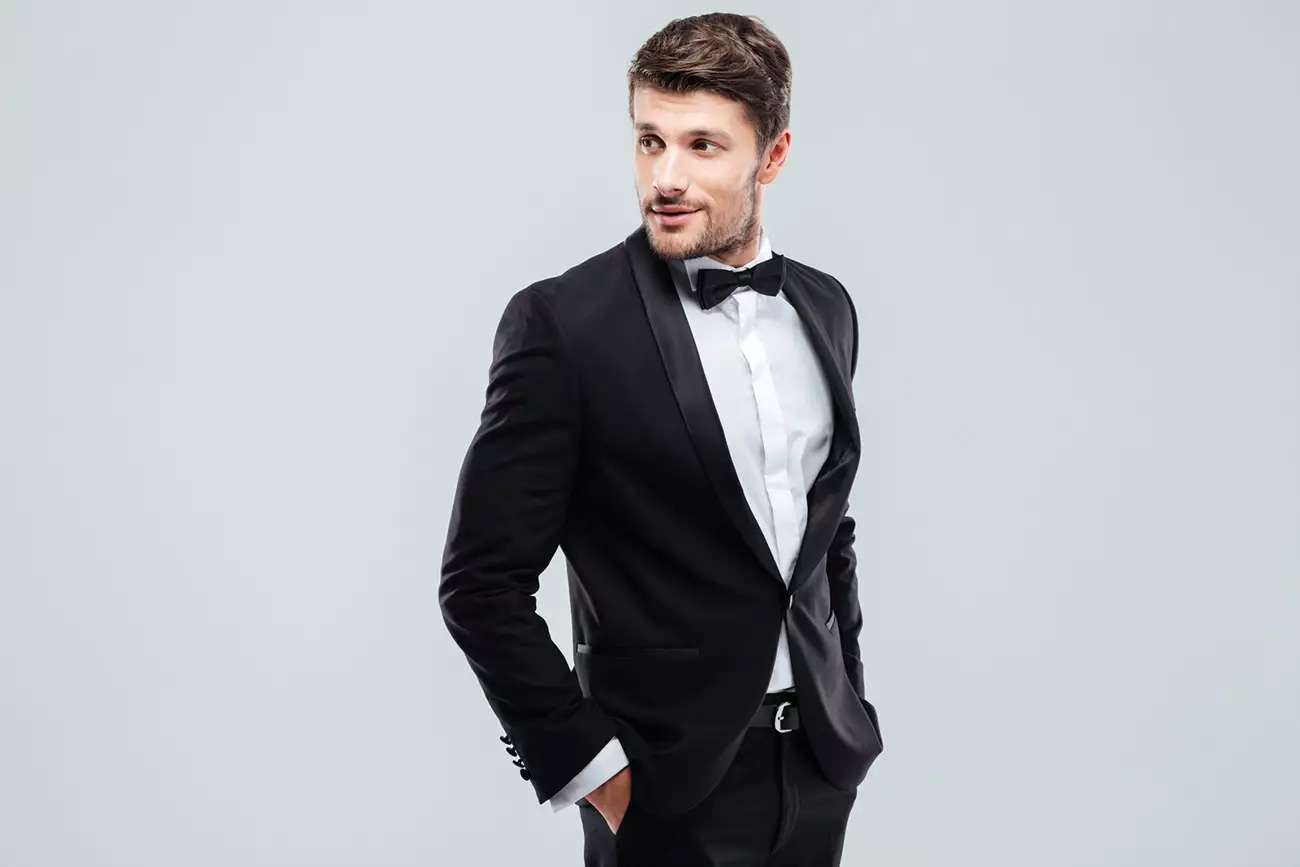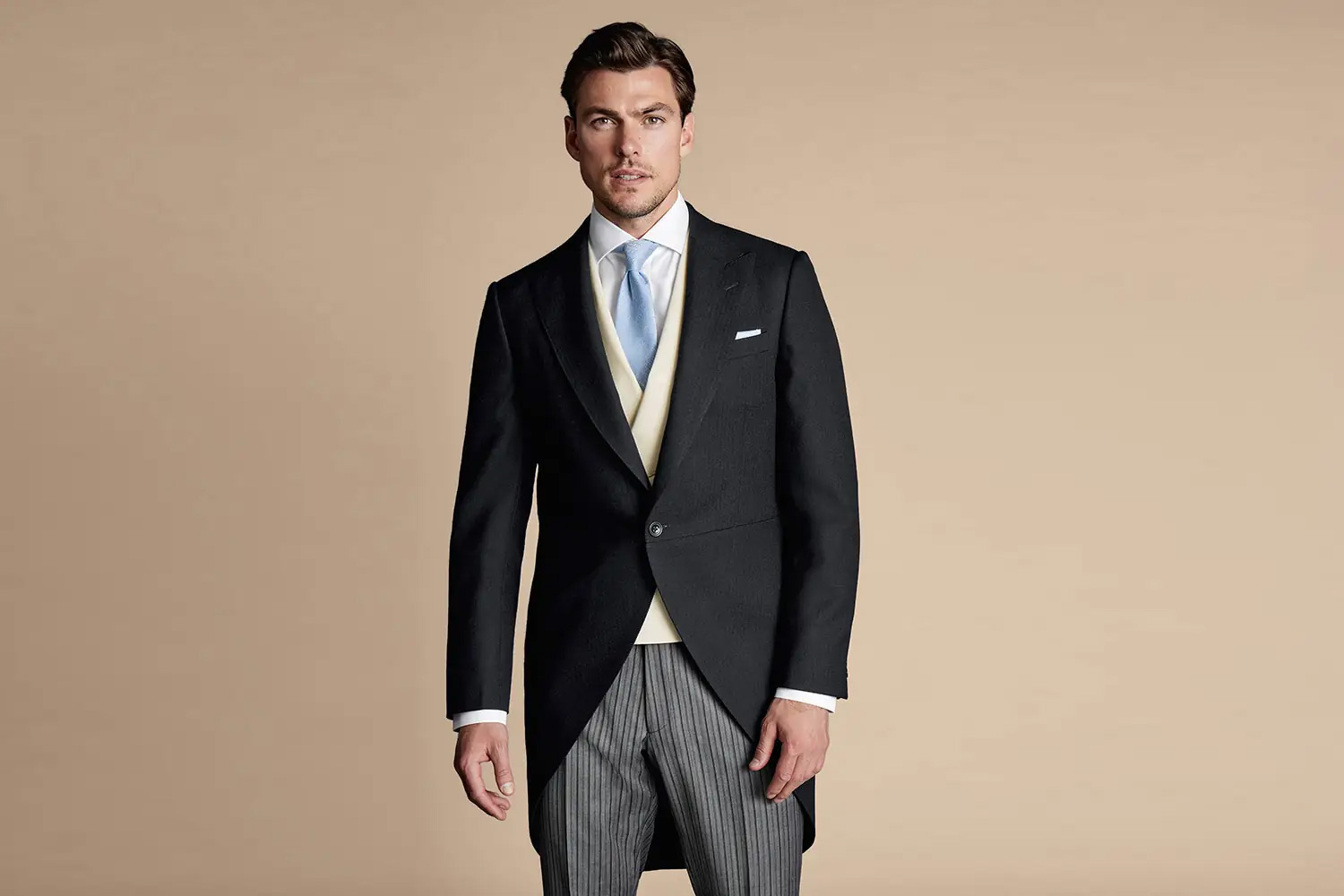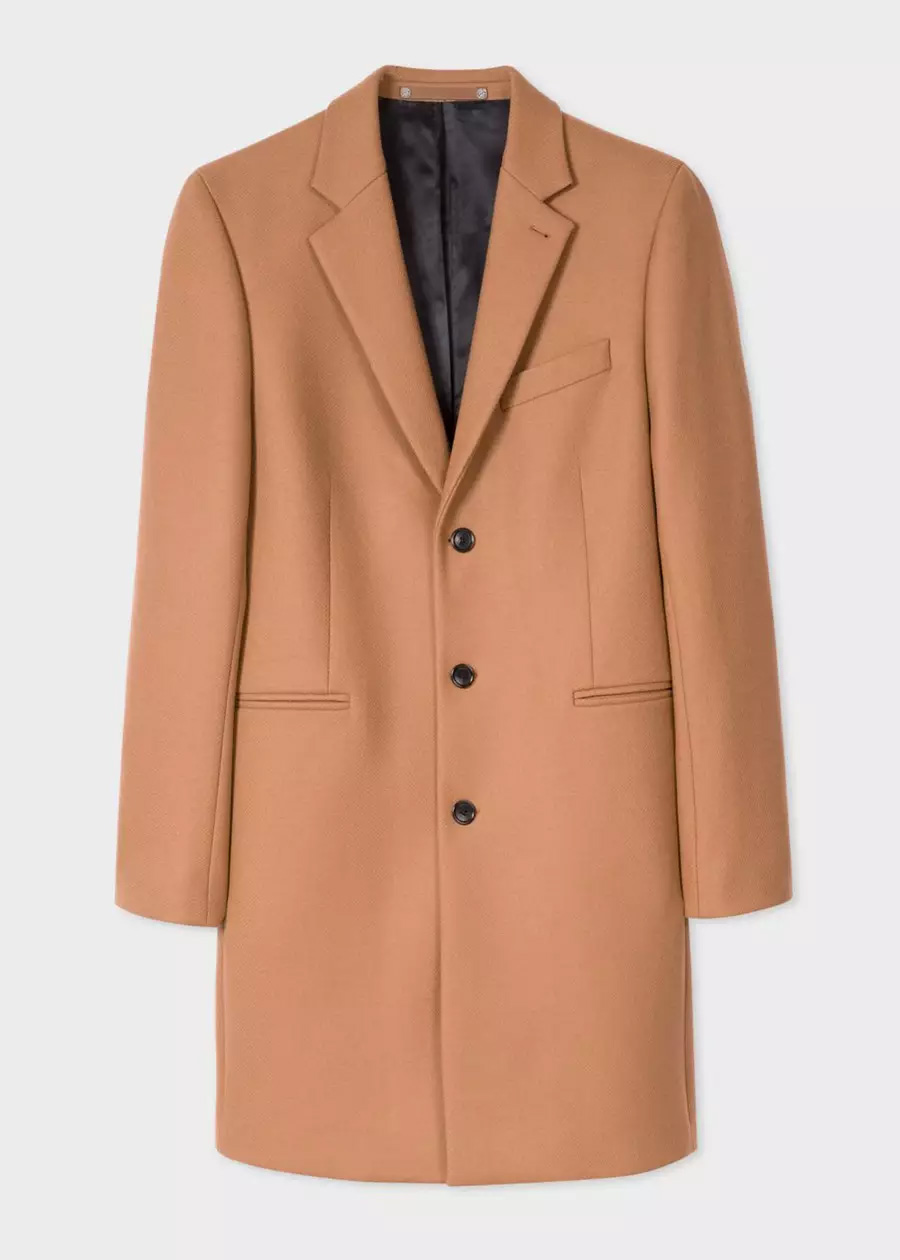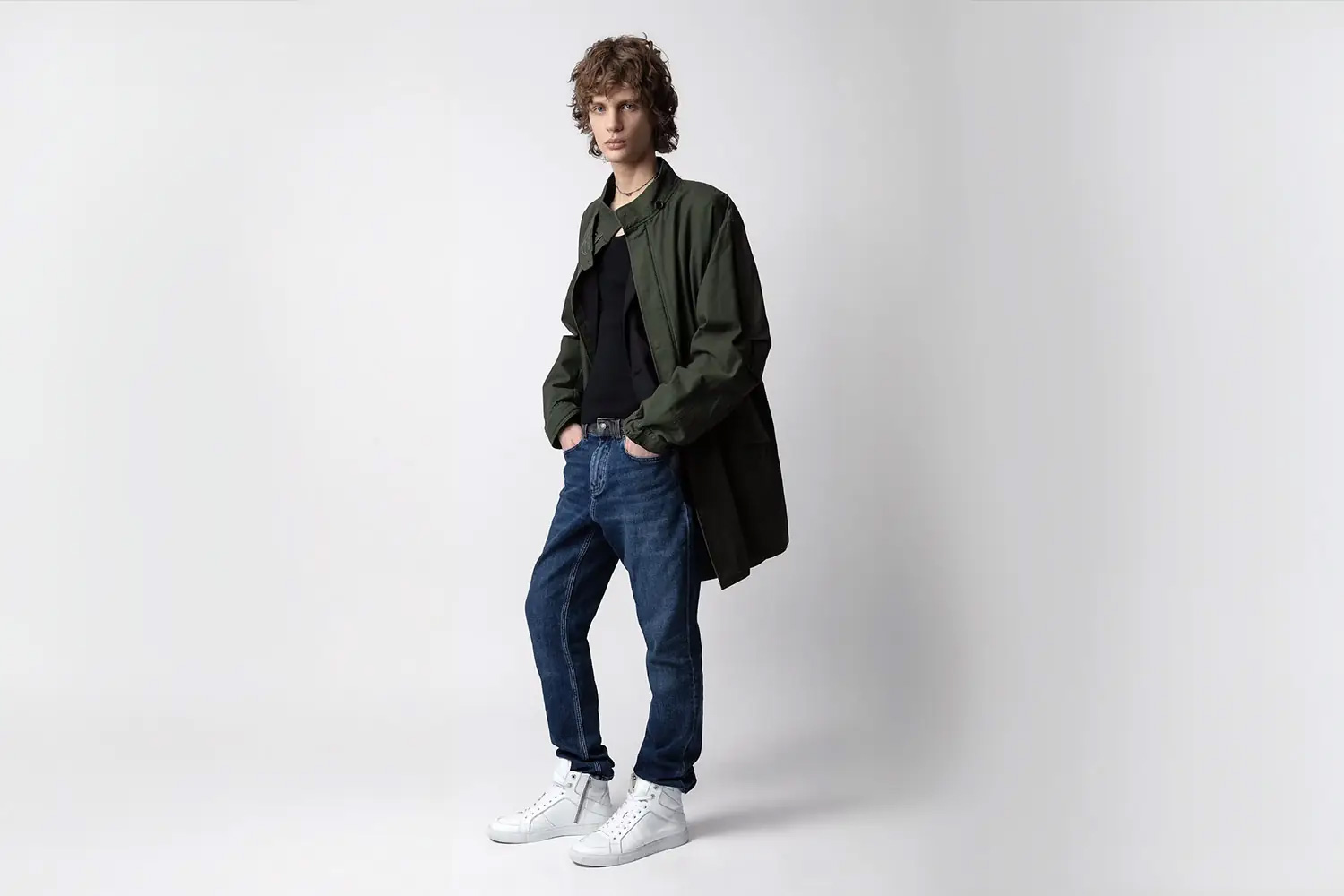Table of contents
An indispensable classic in men’s wardrobes, jackets come in a variety of cuts to suit every look, from the most casual to the most formal. What are the different cuts of men’s jackets to know and have in your wardrobe? And what cut details should you pay attention to when choosing a jacket? For a wedding suits or a tuxedo, let’s see how to find the perfect jackets guys !
In any case, if you want to get by on the cheap, look for your nearest outlet and/or for exemple check out the jackets on private sale.
The different types of jacket
The term jacket covers a wide range of garments for different purposes, so it’s a good idea to be familiar with them before making your choice.
The suit jacket
The centerpiece of any self-respecting men’s wardrobe. The different cuts available make it suitable for almost any body type. Generally made of wool or cotton, suit jackets are lined with satin or polyester, feature a chest pocket for a clutch bag, and sometimes more or less padding on the shoulders. Sleeves are usually buttoned at the end, so that they can be rolled up without removing the jacket to wash hands. Most often worn with matching suit pants, but increasingly with a pair of jeans.
The blazer jacket
Thinner than the classic suit jacket, it nevertheless borrows all the visual codes of the latter, to the point where it’s sometimes difficult to tell them apart at first glance. They are generally unpadded and unlined, for the sake of comfort and casual wear. The blazer jacket can be worn in everyday life, over a simple t-shirt or shirt, for style without necessarily becoming too formal. They are available in straight or slim fit, just like classic suit jackets. A must-have in your wardrobe.
The shirt jacket
Probably the most casual piece in a man’s wardrobe. It’s a relatively new, lightweight garment that combines the overall look of a jacket with the cut of a shirt. It can be worn like a blazer, over a shirt or a simple t-shirt.
Tuxedo jacket
Reserved for special occasions and ceremonies, the tuxedo jacket differs from the suit jacket in several ways. First of all, the lapel, often rounded and called a shawl collar, is made of a different material from the rest of the jacket. The majority of tuxedo jackets feature satin lapels, which add a touch of shine that contrasts with the fabric of the sides. The jacket buttons are also covered in satin, to match the lapels. Tuxedo jackets require matching pants, with satin stripes down the sides of the legs.
The tails jacket
An evolution of the frock coat of yesteryear, the tails jacket is now rarely worn, and is often reserved for conductors. In this case, the front panels are very short and pointed, while the back panels fall low over the buttocks, forcing the wearer to raise them when sitting down.
The coat
The overcoat jacket is an essential winter piece for enjoying a suit without worrying about the weather. The general shape of overcoats is reminiscent of a classic jacket, but the much thicker fabric and lining help protect the suit from the elements. They come in a short version that stops at the hips, a three-quarter version that reaches above the knee, or a long version. Well-matched with the suit jacket, they can make all the difference.
The safari jacket
This is a type of jacket that the world of men’s fashion is gradually reappropriating, taking it out of the casual wardrobe and adapting it to a classier style. These are jackets with a generally long cut, reaching at least to the bottom of the hips, and reminiscent of military jackets designed for desert wear. Hence the name saharienne. Initially made from cotton, in beige or khaki, they are now available in more luxurious materials, suitable for dressier situations. They still feature a flip-up collar, zippers, belt and flap pockets.
Cutting details
Once you’ve decided on the type of jacket and the general cut, there are a number of options to suit your style.
The overall look of the jacket, and classic cuts
Regular fit, slim fit or double-breasted, men’s fashion boutiques offer the style-conscious man all the options he needs to enhance his silhouette.
The straight cut
This is the classic cut, the most common in ready-to-wear boutiques. As the name suggests, the sides of the jacket fall straight down. It’s the easiest jacket cut to wear, and particularly well suited to men with a bit of excess weight to hide, or to those who want comfort without sacrificing elegance.
The slim fit
On these models, the sides of the jacket have a more or less pronounced curvature which, by hugging the body more closely, helps to highlight an athletic profile andrefine a silhouette. Most ready-to-wear stores offer slim-fit jackets, as opposed to regular-fit jackets .
Extra-slim fit
Sometimes offered in ready-to-wear stores, the extra-slim fit is characterized by even more pronounced curves and very close-fitting sleeves. This type of cut is reserved exclusively for the most slender of silhouettes, at the risk of falling into the bad taste of a form-fitting cut, not at all suited to wearing a jacket, be it a suit, blazer or coat.
Jackets with crossed or straight sides
In addition to the above two options, some jackets feature different buttoning options. Most jackets are straight-breasted. This means that the jacket closes at the front, in a classic symmetrical fashion in relation to the collar. But for a more formal style, or simply to add a touch of originality and class, you can opt for a cross-breasted jacket. One side of the jacket is placed over the other, breaking the symmetry of the cut. Wrongly considered less comfortable, these jackets are nevertheless more difficult to wear for men with some abdominal curves.
The shoulder cut, to shape the shoulders
There are three major cuts for jacket shoulders. The highly padded French shoulder cut rises above the shoulder line, accentuating a slim build. This type of cut is not recommended for men with strong shoulders, at the risk of unbalancing the overall silhouette.
Roman shoulders, less padded, are found on the majority of jackets offered by men’s fashion boutiques. They are an ideal compromise between style and discretion.
Finally, Neapolitan shoulders are not padded at all, and fall like a shirt. In fact, they’re sewn under the shoulder for maximum mobility. They’re ideal for men with broad shoulders, to naturally emphasize their muscular build.
Whatever type of shoulder you choose, pay close attention to the stitching. First of all, it must be solid, as it’s a moving part subject to many stresses, and secondly, it must fall perfectly on the natural demarcation of the shoulder, to allow you to move comfortably.
Jacket lapels to stretch the silhouette
Notched, peaked or shawl-collared, the jacket lapel is its signature feature. They can stretch a silhouette vertically and horizontally, depending on the width and type chosen. Choose your lapel according to your body type and size. Wide lapels for a large bust will balance the overall look. Some designers use jacket lapels to create a real style signature, deliberately exaggerating the proportions. While these models may not be easy to wear, they are nonetheless of interest to enthusiasts and collectors of original,eye-catching pieces.
Buttoning for comfort and elegance
The last important detail to know about the cut of men’s jackets is the buttoning. Jackets come in several versions. One, two or even three buttons, or even double-breasted, especially for coats or double-breasted jackets. While the choice here is primarily an aesthetic one, it’s worth remembering that whatever the type of buttoning, sartorial custom dictates that the bottom button should always be left open, to aerate and lighten the silhouette, and avoid making the look too formal.
The number of buttons will influence the visible part of the shirt you wear under your jacket. A single-button jacket will offer the most visibility, while a three-button or double-breasted jacket can reduce visibility until only the first buttons of the shirt are visible. This is a detail to bear in mind if you want to highlight a beautiful shirt or vest.
Pay particular attention to the buttons themselves. On a quality cut, they will be sewn using a cross-stitch, which is much more resistant. The material and color of the buttons are also important. This detail can add a welcome touch of whimsy to a piece that’s a little too classic.
Made-to-measure, or half-measure
If you’re a man with an atypical build, or if you’d like to wear a unique jacket that perfectly suits your taste, the best way is to use the services of a tailor or a boutique that can create a made-to-measure or half-measure suit. You’ll be able to select all the features of your jacket, from the quality and weight of the wool, to the color and material of the lining, the number of buttons, the width of the shoulders…
For the creation of a half-measure jacket, depending on the boutique, you will be given a greater or lesser number ofcustomization options, and only certain measurements will be taken to adapt the cut of the jacket to your body. But the result is well worth the effort, and even if the price of a made-to-measure or half-measure jacket remains higher than that of a ready-to-wear jacket, you’ll have the joy and pride of wearing a unique model whose every detail has been studied to enhance your silhouette.

